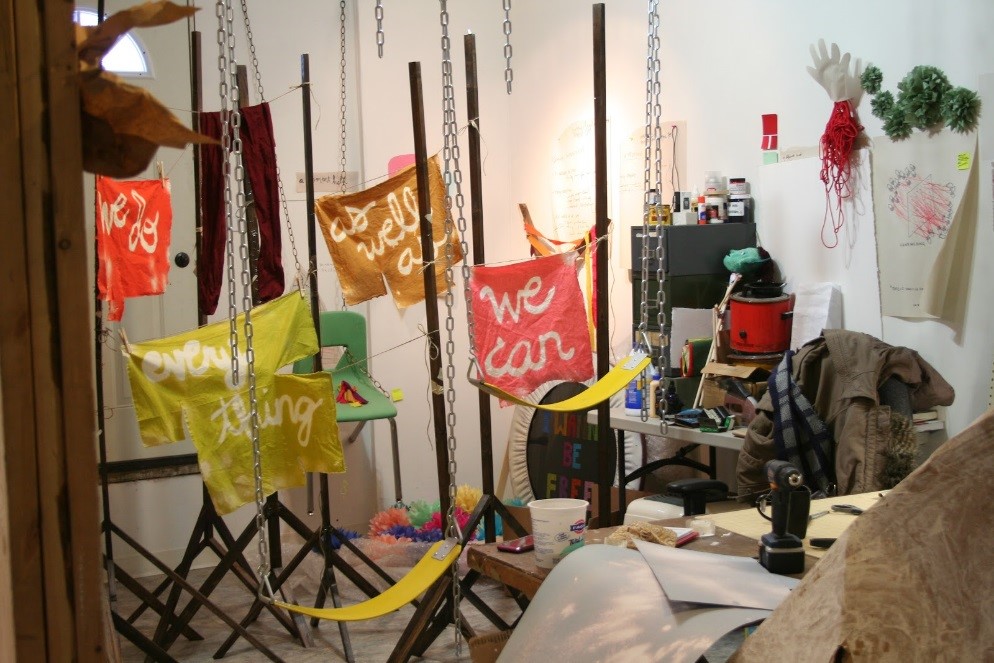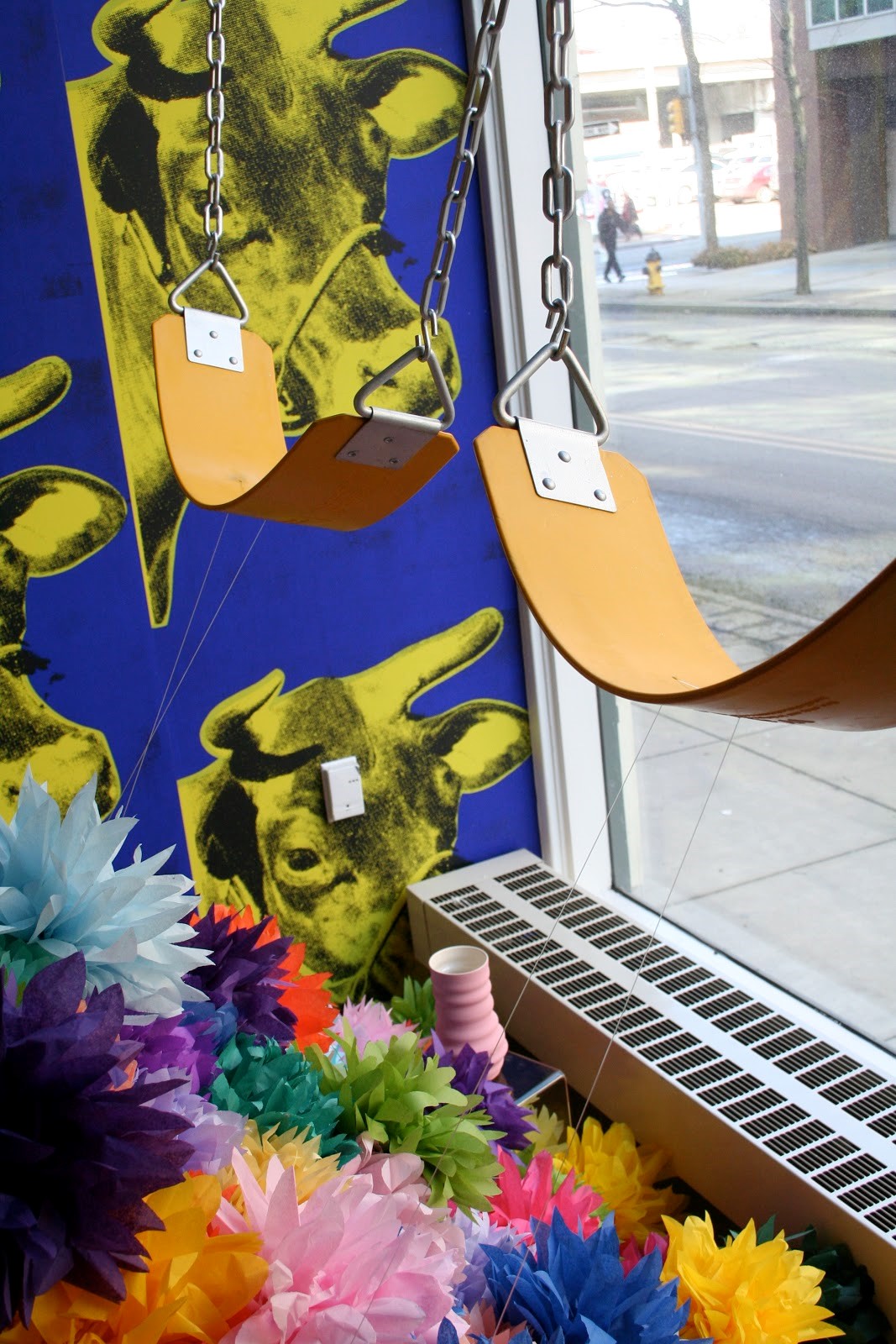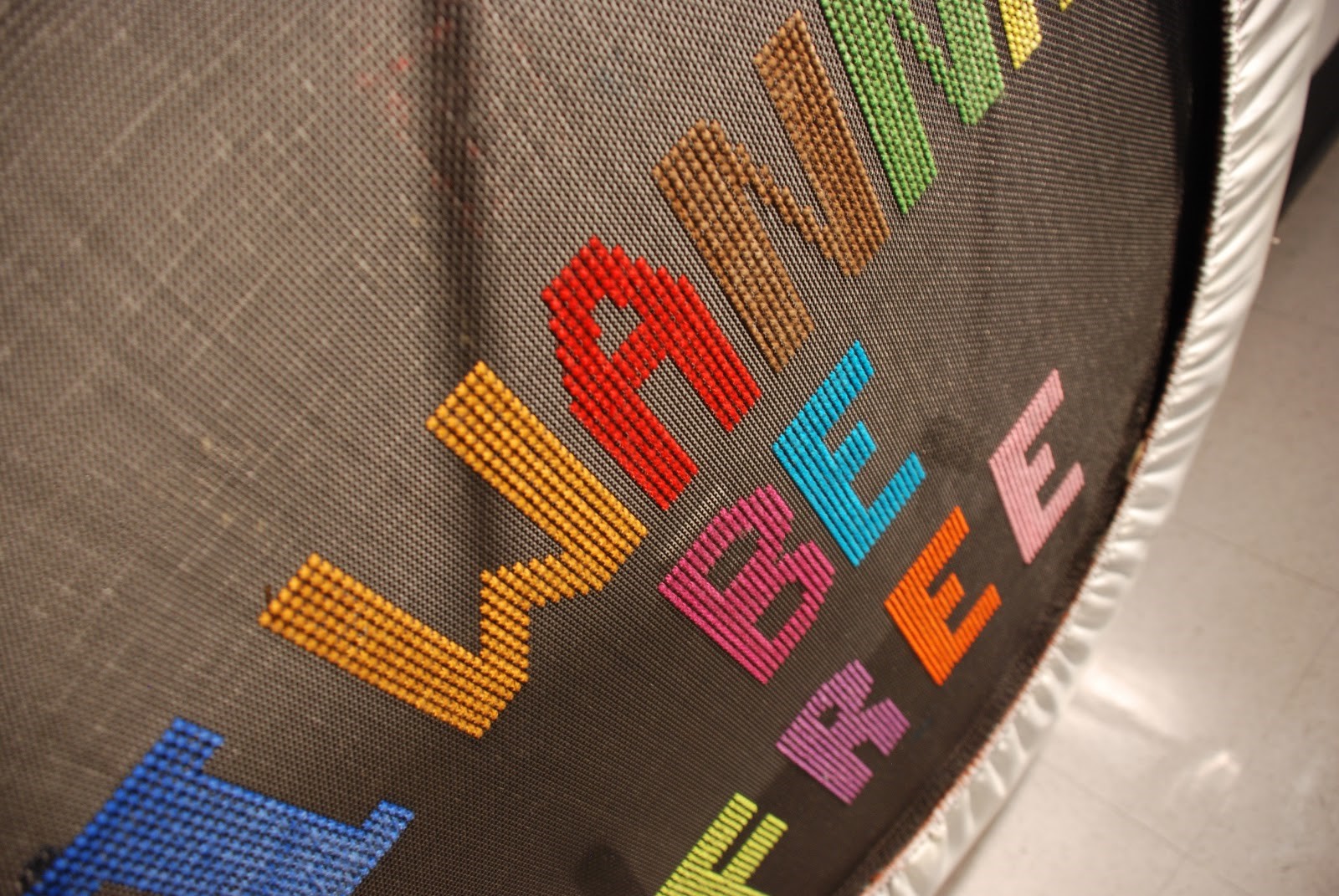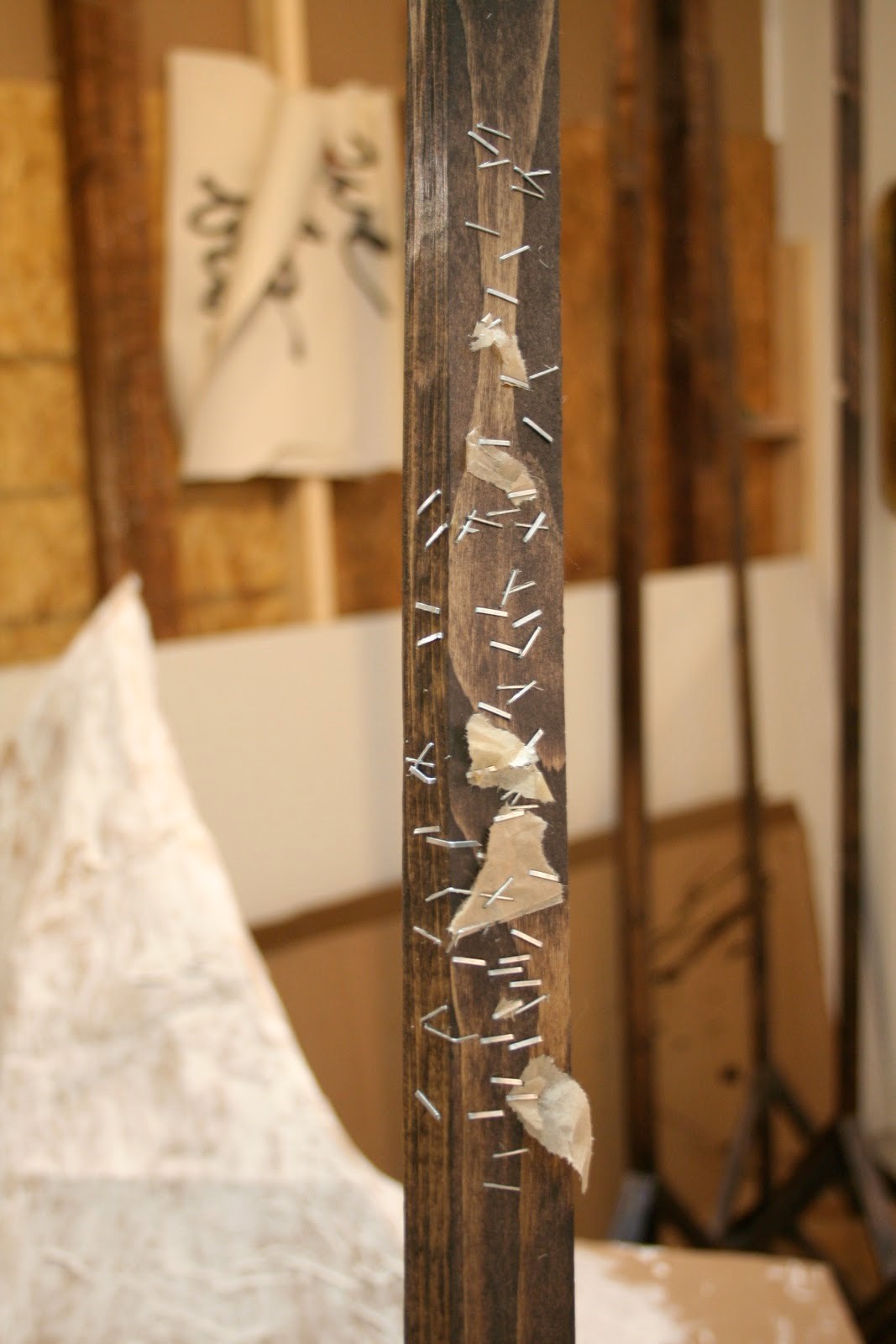Good Intentions, my installation in The Andy Warhol Museum’s Exposures series, is a small body of work envisioned as a complement to Someday is Now: The Art of Corita Kent. Though I have often encountered Kent’s art, I had little previous knowledge of Kent’s story. In preparation for my studio work I immersed myself in her teaching and explored artists and ideas that influenced her creative practice. Serendipitously I found that Kent’s perspective on art and life aligned closely with my own, allowing me the confidence to tie my work with hers while introducing themes that felt relevant to me. Good Intentions presents two new site-specific installations, Try Trusting It for Awhile and Joyous Revolution, and it recontextualizes I wanna be free, an object created in 2010. Designing work for a store window offered the challenge of achieving visibility, which I addressed by using bright colors and minimal materials. I enjoyed the opportunity to be big and playful with my ideas.

Try Trusting It for Awhile owes its title to Kent’s 10 Rules for Students, an inspiring list of suggestions I had previously encountered through my love of John Cage. The first rule: “Find a place you trust, and then try trusting it for a while” resonates with me. As someone who is responsive to new sites and occasionally non-committal, I appreciated the instruction to lean in. While Kent most likely meant this in regard to creative decisions, I explored the statement in the context of a relationship. Two swings, locked together by twisted chains, hang suspended above a small mountain of paper flowers. The swing seats suggest two kinetic bodies frozen in time. The cascade of delicate flowers elevates the moment. The gesture is physically inaccessible to the viewer and monumental for the imagined bodies. A moment of trust between two partners is held infinitely, or at least for awhile.

I wanna be free, a work from 2010, is my spin on an inspirational pillow—the kind usually associated with home-kitsch. The trampoline, sized for an individual or a child, suggests play, but also self-improvement through exercise. Suspended on its side, the trampoline’s elasticity is more symbolic than functional while the form is closer to shield than toy. The phrase “I wanna be free” is part exclamation, part affirmation—a reminder to keep moving toward personal freedom.

Joyous Revolution began as a response to images of Kent’s unorthodox Mary’s Day celebrations, which seem to depict both protest and joyful parade. Kent, whom artist Ben Shahn described as the joyous revolutionary, faced controversy for these flashy gatherings. Using the phrase “We have no art, we do everything as well as we can,” a Balinese saying Kent spread to her students, I present an action that functions as both celebration and protest. In Pittsburgh I witness and participate in a self-sufficient, DIY community of artists that allows expression free from expectations of the mainstream art world, but simultaneously constrains makers from pushing beyond limited resources. The creative lifestyle is the art, with little time and money to produce more substantial work. A tangle of clotheslines becomes the platform for expression, abject, pathetic, and worn.

The Exposures work is on display through June 28, with an artist talk scheduled for April 11. I will present an all-new body of work as the conclusion of my current residency with Bunker Projects in the Friendship-Garfield neighborhood of Pittsburgh. Handholding, opening April 3, will exhibit a collection of site-specific installations that explore the spectrum of support to suppression we experience in our togetherness.
Special thanks to Abbigael Beddall, Mike Vincent, Paul Matarrese, Jessica Beck, and Ben Quint-Glick for their support during the install.
Good Intentions is presented in conjunction with Someday is Now: The Art of Corita Kent, on view through April 19, 2015.

